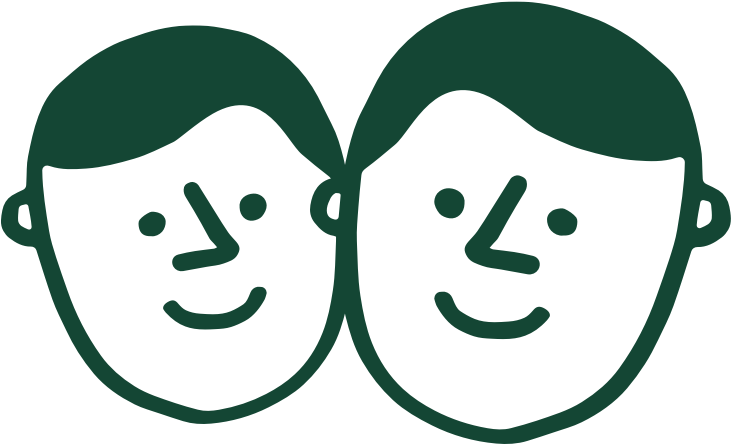How to Play Texas Hold'em Poker
Texas Hold'em is the most popular poker game in the poker world today. Using two of your own
cards and five shared cards, form a five-card hand whose value is ranked higher than the hands of the
other players in the game. Between two and ten players can play at the same Texas Hold'em table.
With PlayNow.com, you can play Limit, No limit and Pot limit.
 is abbreviation for Rules.
is abbreviation for Rules.
Dealing the Game of Texas Hold'em
The object of Texas Hold'em is to create the best five-card hand using seven cards.
- Players will buy-in for the posted amount.
- Selected players will post blinds
The dealer in Texas Hold'em will start to deal each game contingent upon which player has the
"button." The button is a graphical representation ("D") of which player is the "dealer."
Although the dealer will be dealing the Hold'em game, the player who has the button placed in
front of his/her seat gets to play his/her cards as if he were the actual dealer. When the
cards are dealt to players, they are dealt in a manner as if the player was actually dealing
in a live environment.
Please note that depending on the number of players and the seat location, the button move may
be very subtle. Players are asked to pay special attention to where the button is placed.

Because a player is "on the button" two players are asked to "post the big or small blinds".
The blinds serve a purpose similar to antes in that they put forced money into the pot that
gives players an incentive to enter the hand. However, only two players will "post" or "put
up" the blinds.
The first blind is called the "small blind". This bet is usually half the minimum bet of the
game, although in some games, the fraction is slightly different. In $0.10-0.20 limit, the
small blind is $0.10, and in $5-10 no-limit, the small blind is $5.
The second blind is called the "big blind" and is always the same size as the game's minimum
bet, e.g., in a $5-10 limit game, the big blind is $5 and in a $5-10 no-limit game, the big
blind is $10.
 The player directly left of the button will have the "small blind." The player directly to
the left of the small blind will have the "big blind" of the full amount or the lowest game
limit.
The player directly left of the button will have the "small blind." The player directly to
the left of the small blind will have the "big blind" of the full amount or the lowest game
limit.
 During heads-up play, the player with the button will have the "small blind" and the player
to his/her left will have the "big blind."
During heads-up play, the player with the button will have the "small blind" and the player
to his/her left will have the "big blind."
Now that there is a Button and small and big blinds, the game is ready to deal. The dealer
always deals from the player closest to the dealer's left. Moving clockwise around the table,
the game will "deal-in" each player. The players will be dealt one card face down, then a
second card face down. A round of betting will occur starting with the player seated to the
left of the big blind.
How many raises will be allowed per betting round in fixed limit games?
 The general poker rule is a "cap" of three raises allowed per betting round with three or
more players. However, if there is a "heads up" situation whereby only two players remain in
the game, then raises are unlimited.
The general poker rule is a "cap" of three raises allowed per betting round with three or
more players. However, if there is a "heads up" situation whereby only two players remain in
the game, then raises are unlimited.
 The player seated to the left of the big blind will always have the action on the opening
deal. This player may not check, but rather can only fold, call, or raise the amount of the
big blind.
The player seated to the left of the big blind will always have the action on the opening
deal. This player may not check, but rather can only fold, call, or raise the amount of the
big blind.
The game will now advance to each player seated asking to fold, call, or raise until the big
blind is reached for an action decision. If no one has raised by the time the play comes
back around to the big blind, the big blind has the option to "check" their own BLIND wager
or raise.
Once all players have completed the first round of wagering, they will proceed to the flop.

The next cards to be dealt into the game will be the third, fourth and fifth cards in the game.
These three cards will not be dealt to each player, but rather placed face up in the center
of the table.
But before anything is "flopped", a card must be burned. The dealer will deal face down one
card onto the table. After the burn card, the dealer will deal three cards face up in the
center of the poker table. These three cards are called "community cards" which are available
to all players for potential use to make a poker hand. The area in which these cards lie on
the table is commonly referred to as the "board".
The look of the flop:

Now the flop has landed on the "board" and all players now have five cards available to make
their hand; two "hole" cards that were dealt on the opening round, and three "community cards"
which all players may use. The rule of the determination of the action is as follows.
 After the opening deal, the player who is seated closest to the left of the button shall have
the initial action for the remainder of the game. If the player who has the button folds,
then the button is still active and will remain in front of that player's seat to keep the
position of the button constant throughout that game.
After the opening deal, the player who is seated closest to the left of the button shall have
the initial action for the remainder of the game. If the player who has the button folds,
then the button is still active and will remain in front of that player's seat to keep the
position of the button constant throughout that game.
The player that has the action may check or bet. As soon as one player chooses to bet, then
the other players in the hand can no longer check; they can only fold, call or raise the
amount that is proper for that round. For limit games, this is the lower betting limit on the
first round and on the flop, and the higher betting limit on the turn and the river.
* Players may also fold in this situation although this would be a very rare occurrence.

The "turn" is the fourth card to be dealt onto the board and the sixth card available to the
player. Some players call this "fourth street." However, the most common term used for this
round is the ""turn". As always, the dealer will burn a card and then deal one card face up
onto the board to the right of the last flop card.
The look of the turn:

The 9 of spades is the "turn card"
At this point the players have access to the four cards on the board and their two hole cards.
The game will now declare who has the action, which always begins with the player still
remaining
in the hand who is closest to the left of the button.
In limit games, the bet on the turn is the higher level of the betting limit. In a $2-4 game,
this
would be $4. All raises will be in $4 increments with a cap of three raises. If there are just
two
players remaining, the number of raises is unlimited at real money tables.
However, in tournament play, the three-raise limit applies even if there are only two players
left in a hand.
After burning another card, the dealer will then place the fifth and final card on the board. The
most common term for this card is the "river".
River Look:

At this point, five cards are on the board and two hole cards are in the players' hands. The
action again starts with the first player still remaining in the hand who is closest to the
left of the button. All checks, bets, raises, and folds will be completed and then a showdown
will begin.
Who shows first?
 The determination of which players' cards will, and must be, shown first will lie with the
player who had initiated the action or with the person who had initiated the last bet, raise
or re-raise. This simply means that whoever had the last action on the river must show
his/her
cards first.
The determination of which players' cards will, and must be, shown first will lie with the
player who had initiated the action or with the person who had initiated the last bet, raise
or re-raise. This simply means that whoever had the last action on the river must show
his/her
cards first.
 A player who has a winning hand does not have to show his/her cards if his/her bet was not
called.
A player who has a winning hand does not have to show his/her cards if his/her bet was not
called.
 A player is not required to show their cards if, and only if, they are not the player who
had the last action.
A player is not required to show their cards if, and only if, they are not the player who
had the last action.
Please note: Players may set their play to "Muck Losing Hands" in the Menu>Settings.
Muck Losing Hands - checked - will mean that any losing hand will automatically muck. Muck
Losing Hands - unchecked - will mean that the player will be presented with the choice to
muck or show when applicable.
Who wins?
In the PlayNow.com poker room, "cards speak." That means the dealer will find the best
five-card hand using the five (5) community cards on the board and the two (2) pocket
cards in the player's hand. The winner will be decided based on the universal poker hand
rankings.
Texas Hold'em Blind Rules
 All players must pay for their blinds in full before they are allowed to get the button.
Therefore, the player who had posted the small blind in the prior hand will receive the
button on the next deal of any game. However, during heads-up play, the button will
alternate between the two players so that no player holds the button two hands in a row.
All players must pay for their blinds in full before they are allowed to get the button.
Therefore, the player who had posted the small blind in the prior hand will receive the
button on the next deal of any game. However, during heads-up play, the button will
alternate between the two players so that no player holds the button two hands in a row.
In the event that a player only has enough money to cover the big blind, that player WILL NOT
participate in the hand. The player will be required to purchase more chips in order to
play. For example, if the blinds are $0.25/0.50 and a player has exactly $0.50, that player
may NOT play.
In the event there is a new player to the game, two options could then occur:
- If the new player is not seated in the big blind, then he/she may choose to "post" the
big blind or "wait". If the player does post, then his/her wager is active. If the
player chooses to "wait," he/she will have missed the blind. The missed blind must be
reposted prior to the next hand.
- If the new player is seated in the big blind, then he/she is treated as such.
- Missed big blind: If a player misses the big blind for any reason, then
that player may not play in any hands until the sum of all blinds are made up. The game
will place an "MB" button in that seat to declare the missed big blind. The game will
ask the next active player to the left to post the big blind for the hand. If the missed
player makes up the sum of all blinds, then the small blind portion is dead and must be
put into the pot before the hand is dealt.
- Missed small blind: If a player misses the small blind for any reason,
then that player may not play in any hands until the small blind is made up. The game
will place an "MS" button in that seat to declare the missed small blind.
![]() is abbreviation for Rules.
is abbreviation for Rules.![]() The determination of which players' cards will, and must be, shown first will lie with the
player who had initiated the action or with the person who had initiated the last bet, raise
or re-raise. This simply means that whoever had the last action on the river must show
his/her
cards first.
The determination of which players' cards will, and must be, shown first will lie with the
player who had initiated the action or with the person who had initiated the last bet, raise
or re-raise. This simply means that whoever had the last action on the river must show
his/her
cards first.![]() All players must pay for their blinds in full before they are allowed to get the button.
Therefore, the player who had posted the small blind in the prior hand will receive the
button on the next deal of any game. However, during heads-up play, the button will
alternate between the two players so that no player holds the button two hands in a row.
All players must pay for their blinds in full before they are allowed to get the button.
Therefore, the player who had posted the small blind in the prior hand will receive the
button on the next deal of any game. However, during heads-up play, the button will
alternate between the two players so that no player holds the button two hands in a row.


















